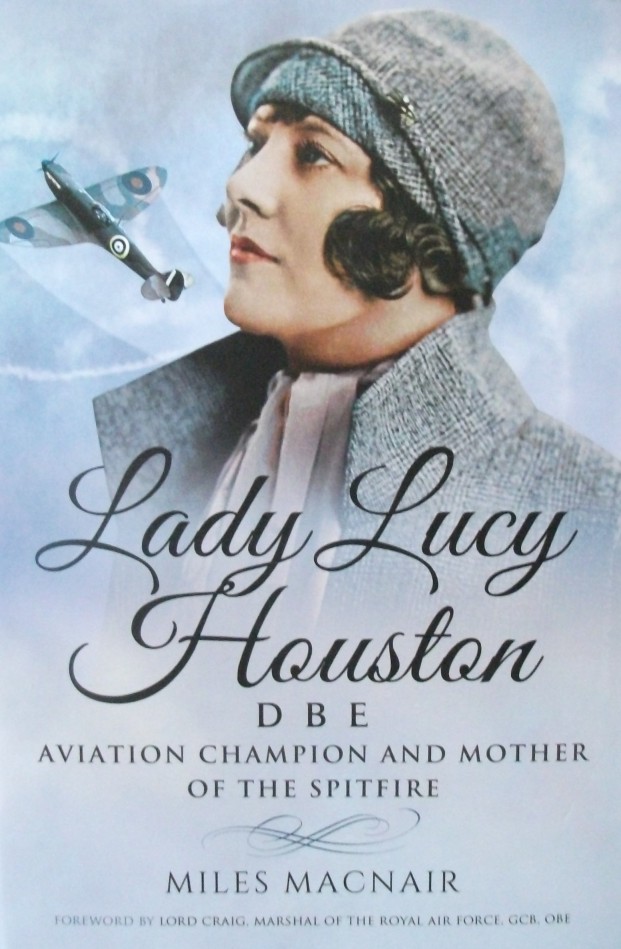
Reviewer: Michael Keith
Title: The Spitfire: An Icon of the Skies
Editor: Philip Kaplan
No. of Pages: 234
Rating Scale (1: very poor, 10: excellent): 7
_____________________________
According to its author, this volume: ‘…Looks at both the magnificent restoration of a AR213 [A specific aircraft], and at the Spitfire generally. It considers the mystique and charisma associated with the type, its principle designer R.J. Mitchell, the Spitfires of the pre-war years, the Spitfire in the battle of Britain, flying the aeroplane, the roles of the Spitfire in the Second World War, the amazing career of Alex Henshaw as Chief Test Pilot…the famous Rolls Royce Merlin engine…some of the motion picture and television performances of the Spitfire, and the phenomenal evolution of the warbird movement’. It is an excellent precis.
The volume consists of 12 Chapters. These cover the subjects described above and are accompanied by numerous monochrome and colour photographs. These are of both aircraft and individuals; all are relevant to the narrative. However, the image sources are not included with the images, but are instead listed in a separate Picture Credits section placed at the back of the book (of which more anon). Art works, along with images from both print media and philately, also appear, together with numerous personal reminiscences.
Regrettably, for this reviewer, this volume has several significant faults. Of these (and the most curious and serious; at least for this reviewer), concerns the Contents page. On it there is a complete absence of reference to the volume’s ‘support services’. That the Acknowledgements. Bibliography, Picture Credits and Index sections appear within the book is easily verifiable, yet the Contents page contains no reference to their existence. Why this is so is unknown. In addition, an un-named (but two-page) section has been placed immediately after the Contents page. Exactly what it is, and why it has been placed where it is, is unexplained. To this reviewer, that section appears to be a ‘grab-bag’ of the material that will later appear within the body of the volume, but in the absence of a title, its function is uncertain. Regrettably, the authority of the Index is also doubtful, with a random search for ‘Park, Keith within it indicating that an entry to Park Keith would be found on page 99. No such entry was found. Have other, similar, omissions occurred? There is no way to know. As previously-noted, this book contains numerous personal reminiscences and quotes from those personally involved with the aircraft. Regrettably, little effort has been made to indicate when one individual’s quotes end and another’s starts, or of their sources (whether published, personal documents, or conversations). Page 35 is but one example, with the absence of quotation marks and citations making it initially difficult for this reviewer to determine where the ‘Beurling’ section ended and the ‘Lacy’ one commenced. Similar examples appear elsewhere. Readers seeking further information about the origins of such quotes will also have no idea where to look as no citations are provided to indicate their sources. The author certainly uses the Acknowledgements section to thank those who helped him by providing ‘…Quoted and other material’.
However, this is a ‘blanket’ thanks and in the absence of specific sources for specific quotes it likely to be of little use to a researcher. A list of the abbreviations used throughout the volume would also have been useful. No maps appear within the volume.
The volume can be considered a ‘Potted History’ of the Spitfire and its military and civilian service, with particular emphasis being placed on the restoration of AR213. On that basis it will probably appeal to Spitfire aficionados in particular and to aviation and war-bird enthusiasts in general. Aviation historians may find it worthy of their perusal, while ‘generalist’ military historians may also find it of interest. Pilots and ‘Aviation buffs’ of all persuasions may also find it worth a look. Aeromodellers specifically interested in the Spitfire (especially the early marks as exemplified by AR213) are also likely to find the colour images useful.
On a Rating Scale where 1: very poor, 10: excellent: I have given this volume a 7.
_____________________________
